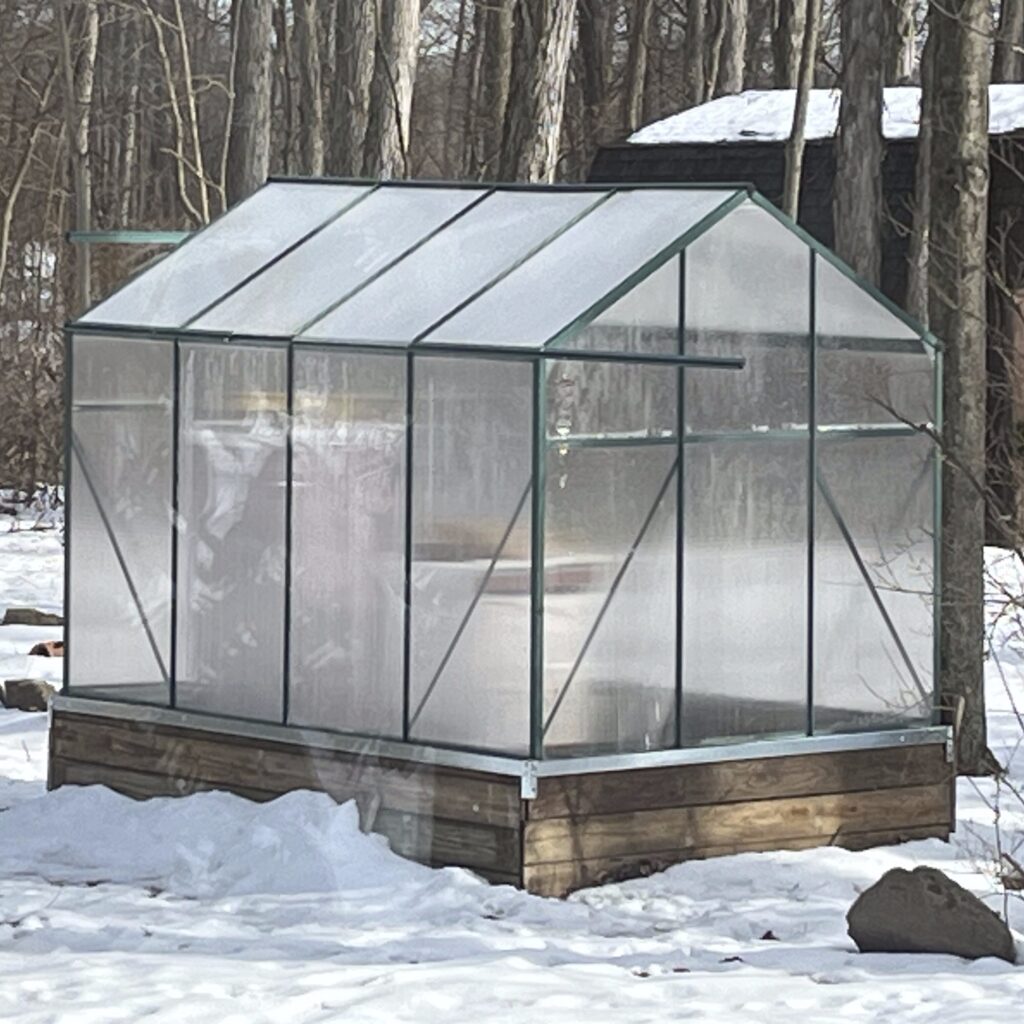After many years of struggle, frustration, and trial-and error… We think we have figured out how to navigate over-wintering a bee hive – maybe?
Bees are inherently summer creatures. Originating from somewhere in the warm zones of Northern Africa, the Middle East, or possibly Southern Europe. The winters are a struggle. The bees will attempt to keep their queen nice and warm, in the mid 90s°F, by forming a ball and rotating colder bees into the warm cluster. Huddled together, vibrating to make heat, trying to eat the cold honey, and trying not to go to the bathroom in the hive, winters are long. If a bee gets colder than mid 45°-50°F it will become immobile. In a cold winter when it reaches down into freezing temperatures a bee will perish. The optimal over-winter temperatures are about 40°F outside the hive! Not ideal for an Ohio January where the low this year was -9°F and we averaged 22°F.
We have tried a number of solutions over the years:
- Old wisdom – Moisture is detrimental to bees, moisture kills bees.
- Everyone we first talked to warned us about moisture. A wet bee is a dead bee…. They suggested keeping the hive partially open and drafty to allow moisture to escape.
- Result: The bee’s died quickly from the freezing cold.
- What we learned:
- Moisture is needed to re-hydrate food
- High moisture is known to combat varroa mites
- Higher hive carbon dioxide levels induce hibernation activity
- Cold kills bees!
- Old Standard Practice – Wrap the hive in tar-paper to keep the wind out and moisture out
- The idea is that wind will chill the bees and the box needs more insulation to keep the bees warm.
- Result: This Helped, but the bee’s still died
- What we learned:
- Bees need to be kept warm!
- New Idea – Bees need to be warm!
- Lots of discussion on the forums about how trees have a insulation R-5 or higher and the standard hive box is about R-1
- Wrap the hive in 2” thick R14 insulated foam layer and add a seed starting heating pad under the hive to keep them warm
- What we learned:
- The bee’s survived until January/February
- The internal hive temp stayed in the 80°F until it suddenly crashed
- Bees tended to fly out of the hive thinking it is still summer. When it was actually freeze (negative temperatures outside). Suspect that they nearly instantly froze, and never come back. The colony lost all the bees and eventually froze too. Only 1/2 cup of bees remained. The hive was empty!
- Too hot is not good!
This year (2024-2025 winter), we did a combined approach!
Greenhouse! + Light Insulation! = Success!
- Goal: Keep the average temperature about 40F
- Reduce wind & rain to keep dry
- Feed aggressively if needed
The Setup:
- In October, we built a small greenhouse around the beehives, with sliding panels to open and allow bees to leave on warm days.
- In November, when it got cold, we covered the hive in a light blanket of insulation. This was a plastic protected fiberglass blanket, the type that commonly found wrapped around dishwashers, and other small appliances.
- We fed solid sugar all winter and protein in the spring
- The hive had an empty deep brood box on the bottom
Even through the cold snaps and random hot/cold days in March they survived!!!
The updated hypothesis:
- Lightly insulated keeps the bees in winter mode (ie: they stay in the hive) and warm enough to survive, but not be confused enough to fly away.
- An empty deep box at the bottom of the hive keeps the cluster away from the cold drafty basement.
- The greenhouse helps keep the average temperatures above immobile temperatures during the day allowing them to get break and move to food.


